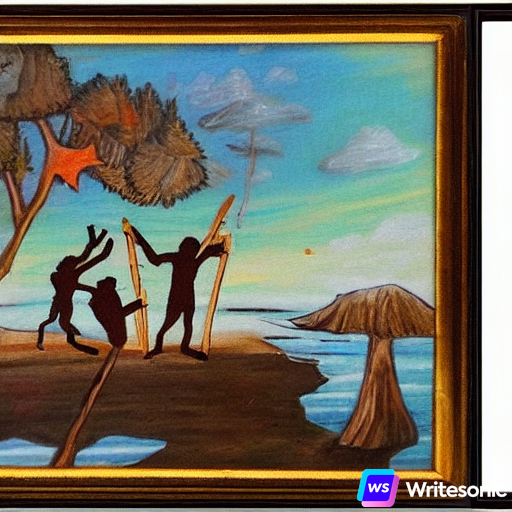A Beginner’s Guide to Pricing Your Art: Strategies for New Artists
Are you an artist looking to start selling your work? Are you unsure of how much to charge for your artwork? You’re not alone! Many new artists struggle with the process of pricing their art. It can be intimidating and confusing to figure out how to set prices that will attract buyers and still make you a reasonable profit. Not to worry – this beginner’s guide to pricing your art will provide you with strategies to help you determine the right price for your artwork. We’ll discuss the factors to consider when setting your prices, as well as tips for negotiating with potential buyers. With this resource, you’ll be able to confidently set prices for your art that will make both you and your buyers happy. So let’s get started!
Factors to Consider When Pricing Your Artwork
There are a number of factors to consider when pricing your artwork. The type of art you create, your experience as an artist, your marketing efforts, and the size and medium of your art are all important factors to consider when pricing your work. Let’s take a look at each of these in more detail.
The Type of Art You Create
Different types of art have different price points. When setting your prices, be sure to take into account the artistic medium you use, such as paint, drawing, or mixed media. Additionally, the subject matter of your art should also be taken into account. Artwork depicting landscapes, wildlife, and outdoor scenes tend to be less expensive than artwork depicting floral bouquets, still lifes, and portraits.
Your Experience as an Artist
Art collectors often like to purchase artwork from emerging and/or experimental artists. If your artwork is created in the experimental or emerging art genre, expect it to be less expensive than artwork created by artists who have been in the industry for several years.
Marketing Efforts
Some artists choose to market their artwork as low-priced “starter art” or with some other marketing designation. These types of marketing efforts can often lower the perceived value of the artist’s work. For example, you may want to consider pricing one piece of artwork higher than the rest. This piece can then be used as a “showpiece” to demonstrate the quality of your artwork and the rest of your pieces.
The Size and Medium of Your Art
The size and medium of your artwork affects the price, as well. For example, a small watercolor painting that may take the artist only a few days to create may be less expensive than a larger, more detailed oil painting.
Establishing Your Base Price
While your price may be determined by a number of factors listed above, your base price is the minimum amount you’re willing to accept for each piece of artwork. Establishing your base price is the first step in pricing your artwork. The first thing you’ll want to do is calculate all of your costs. What does it cost to produce one piece of artwork? Consider all of your up-front costs, such as the cost of supplies and the time it takes to produce the artwork. If you’re selling your artwork online, you’ll also have to take into account the cost of supplies needed to ship the artwork. All of these factors can help you determine the cost of producing each piece of artwork.
Your desired profit margin is another important factor to consider when pricing your artwork. It’s important to remember that making a profit is necessary! You’re an artist, and you need to make a living. While it’s important to set a price that’s attractive to buyers, it’s also important to price your artwork at a level that makes you happy. If you’re not making a profit, you’ll quickly become discouraged and want to quit!
Setting Prices for Prints and Reproductions

If you’re selling prints and reproductions of your artwork, you’ll need to consider the fact that these items will be priced lower than your original artwork. In general, most art buyers expect to pay about 50% less for prints and/or reproductions of artwork. If you’re selling reproductions of your artwork, such as canvas prints, posters, etc., you can use a pricing table. This will allow you to show the prices for different sizes of the artwork. It’s best to keep your pricing table simple and easy to understand. You may want to consider including the word “reproduction” in the title of the price table so your potential customers know what they’re actually purchasing.
Strategies for Promoting Your Art
Now that you know how to price your artwork, let’s take a look at how to promote your artwork. Customers often decide whether or not to purchase an artist’s work based on how much it costs. In other words, potential buyers will look at the price of your artwork before they look at the artwork itself.
There are many different ways to promote your artwork. You can create a website or social media page dedicated to your artwork. You can also use online marketing tools, such as online ad services, online classifieds, and social media advertising. With the advent of online art sales websites and social media, new artists have more opportunities than ever before to sell their artwork. However, it’s important to remember that you’ll likely need to promote your artwork on a daily basis if you want it to sell.
Related: How to find your artist style
How to price your art as a Beginning artist: Conclusion
The art industry is always changing and evolving, making it difficult to stay on top of current trends and best practices. Thankfully, this beginner’s guide to pricing your art provides artists with strategies and best practices for setting prices for their artwork. Artists who use these strategies will be able to confidently set prices that will make both them and their customers happy. Be sure to sign up for emails to be notified of new artist tips and tricks.








